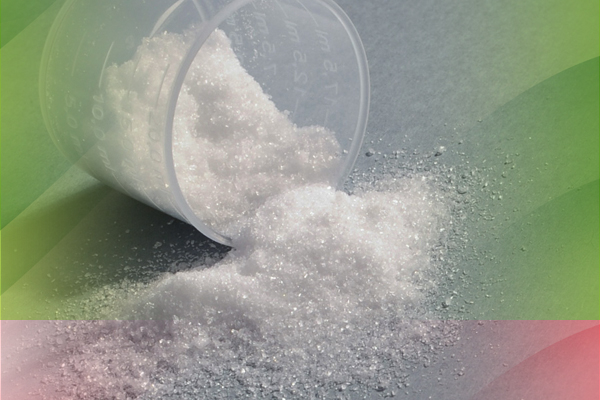Urea: Why’s it so potent beautifying agent? Learn its properties

The truth is, urea isn’t a novelty, although it has burst onto cosmetic recipes as a wondrous ingredient that is potent enough to deal with many, even severe skin ailments. Learn the properties and application of urea in beauty products!
What’s urea and where does it come from?
There is no need to look for urea in some remote and exotic area since it’s… a constituent of our bodies. It’s formed in human organism as a side product of protein metabolism and is excreted together with sweat and urine. Moreover, urea can be found on skin where it plays a role of the main constituent of NMF which is natural moisturizing factor. Of course, cosmetic producers use synthetic analogue of urea, non-toxic and anallergic.
Urea – beauty benefits
Urea is white, non-fragrant and crystal powder which can be dissolved in water and alcohol. For cosmetic purposes there are ammonia and carbon dioxide used. The name ‘urea’ is naturally colloquial and its chemical name is carbamide or the diamide of carbonic acid.
Urea is a humectant, so it belongs to substances of a remarkable ability to absorb water. Therefore, it’s one of the substances responsible for the proper skin hydration. And this is the main reason, as we’ve mentioned above, why it’s included into NMF group and together with the other substances it makes sure that the evaporation of water isn’t intensive and the epidermis is dense enough. Moreover, in average urea constitutes approximately 7% of the human body but this percentage gets lower with age, therefore women who turned 70 have eight times less urea in their bodies than women who are half this age.
Urea has more than just one… concentration. Effects of urea added to beauty products
There are various concentrations of urea added to beauty products. Each of them affects the way a particular cosmetic works.
- 2% urea – helps epidermis to regenerate and accelerates cell division process; it’s the most frequently used concentration of urea in moisturising and regenerating cosmetics.
- 3%-10% urea – moisturizes and softens because it locks water in corneum; such concentration can be mainly found in foot preparations.
- 10% urea – displays antiseptic properties; added to face toners for acne-prone skin.
- 10%-30% urea – breaks hydrogen keratin bonds, is good at softening skin and increases its permeability so it facilitates transportation and penetration of active substances that beauty products and medicine have.
- 30%-40% urea – it’s a potent exfoliating agent so this concentration can be found in scrubs and all types of skin exfoliating treatments and super dry skin preparations.
- 40%-50% and more urea – strongly exfoliating agent, it isn’t widely accessible in drugstores but prescribed by dermatologists. Urea of this concentration helps for example to heal psoriasis and atopic dermatitis.
Urea – Application in cosmetics
An interesting fact is that urea wasn’t popular due to its name. The first cream with urea was created no sooner than in 1943. Today, urea is widely used but not only in daily care products but also in dermocosmetics as well as in strong and curing treatments.
Urea has found its place in many beauty products. It’s added to creams (face, foot, hands), body balms, ointments, face toners, shampoos, hair conditioners and toothpastes. This popularity was gained thanks to the wide range of applications that urea offers, especially the ability to moisturize and lock water in epidermis.
What’s also important to realize, this cosmetic is irreplaceable when it comes to treating dry and atopic skin type as well as during menopause when skin is getting flabby due to hormone level drop. Also, it heals skin irritated by too excessive sunbathing.
Urea is also useful to treat sensitive and allergy-prone skin (it doesn’t irritate so it safely exfoliates dead cells which makes it a good alternative to fruit acids which aren’t tolerated by sensitive skin). Finally, it helps to take care of acne skin, deals with dehydrated knees and elbows, it’s also a marvelous remedy to treat cracking and dehydrated heels.

Revive and Illuminate Your Eyes: Discover the Comfort of Nanolash Collagen Eye Patches
In the fast-paced rhythm of everyday life, the eyes rarely get a moment of rest. Late nights,...
Say Goodbye to Clumps: 5 Mascaras That Truly Deliver Stunning Lashes
Tired of mascaras that promise volume but end up ruining your makeup by mid-day? You’re...